Pioneering
Fair-Learning
Research:
Our research aims to identify, address, and eliminate discrepancies in Hybrid Learning
“Embark on our explorative journey as we strive to harmonize and enhance the learning experience for both in-person (Roomies) and remote (Zoomies) learners”
Bridging the Gap in Hybrid Learning
Experimental Overview
Testing this hypothesis involves an experiment replicating a realistic hybrid learning scenario, where we observe and assess Roomie and Zoomie behavior, participation, and academic performance under varied conditions.
As education evolves, hybrid learning—a mix of in-person and remote education—poses unique challenges. Disparities exist in engagement and effectiveness between in-classroom students (Roomies) and remote students (Zoomies).
Our experiment aims to confront these challenges to establish a fair, engaging learning experience for all. We hypothesize that with a careful mix of technology, teaching methods, and communication, we can foster an environment where both Roomies and Zoomies excel.
Key questions guiding our research
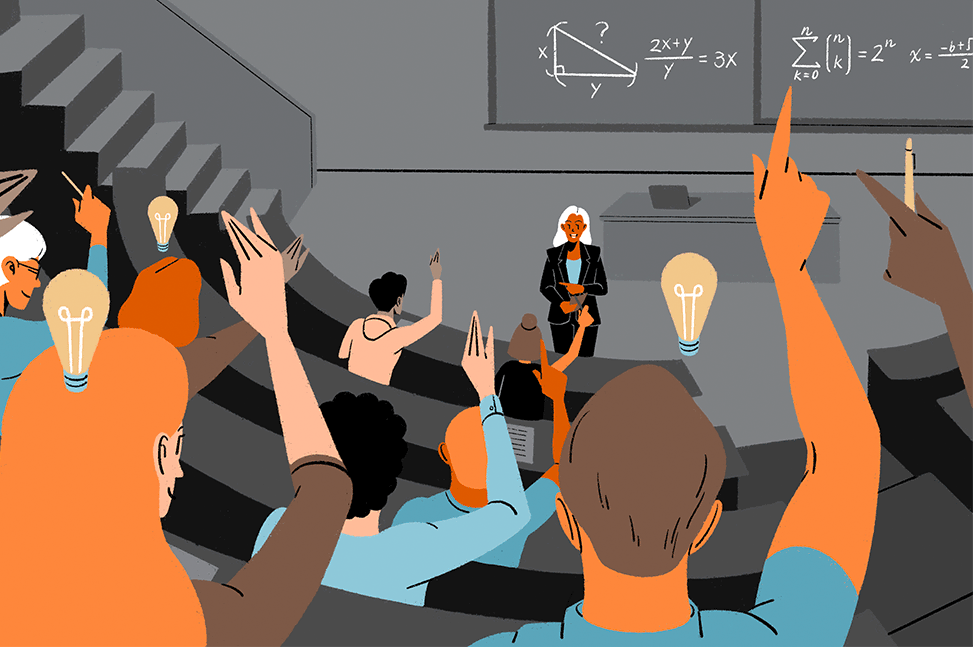
How can we make remote learners feel as included and engaged as those in class?
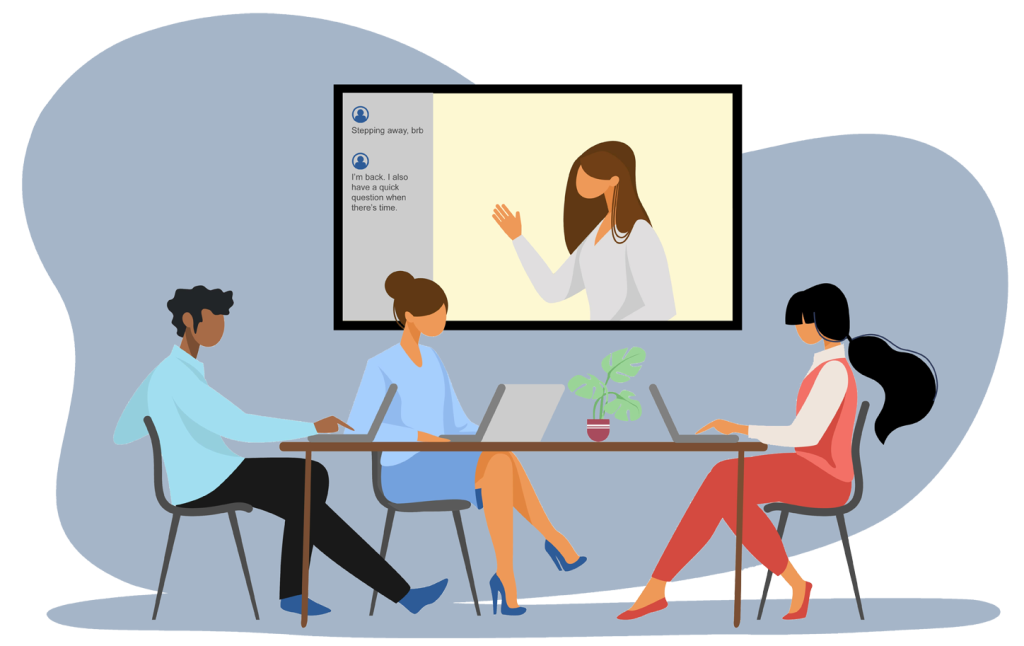
What tools can we use to make Roomies and Zoomies have more interaction?

How do we get students to retain their knowledge learnt that day?
We have carried out 5 experimental lessons
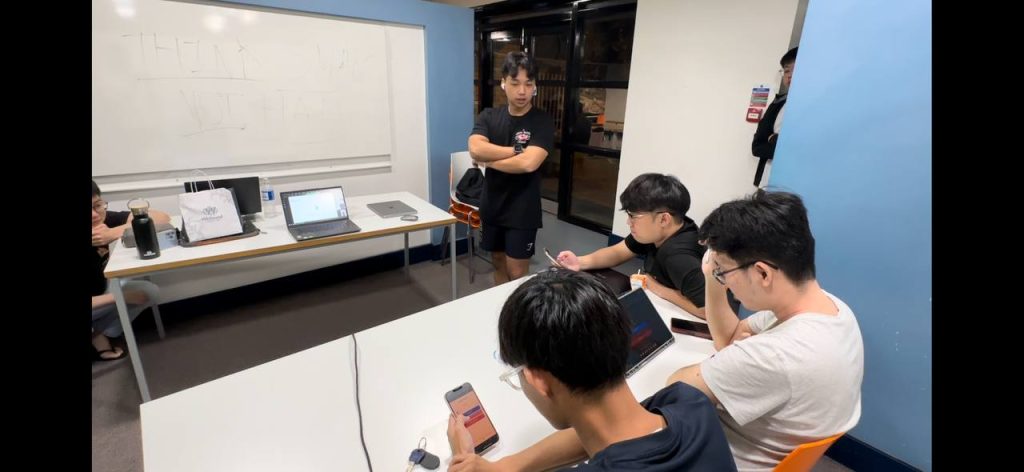
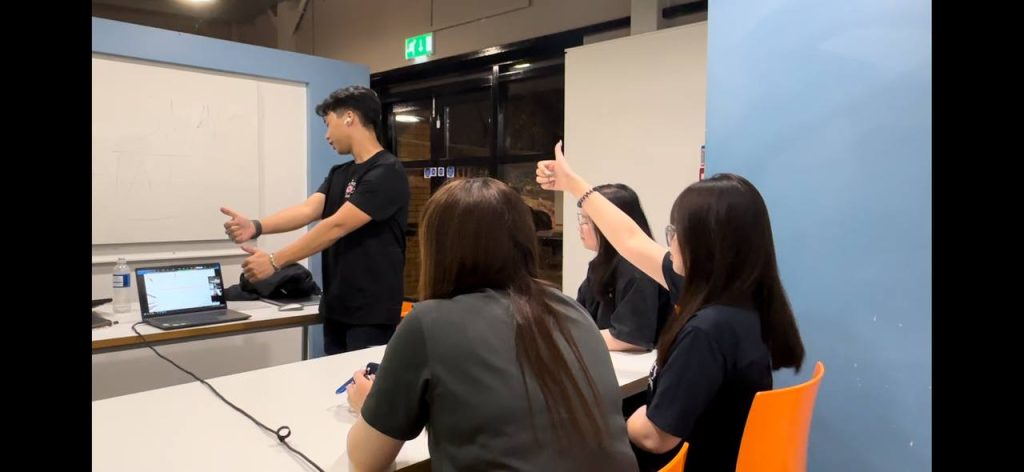
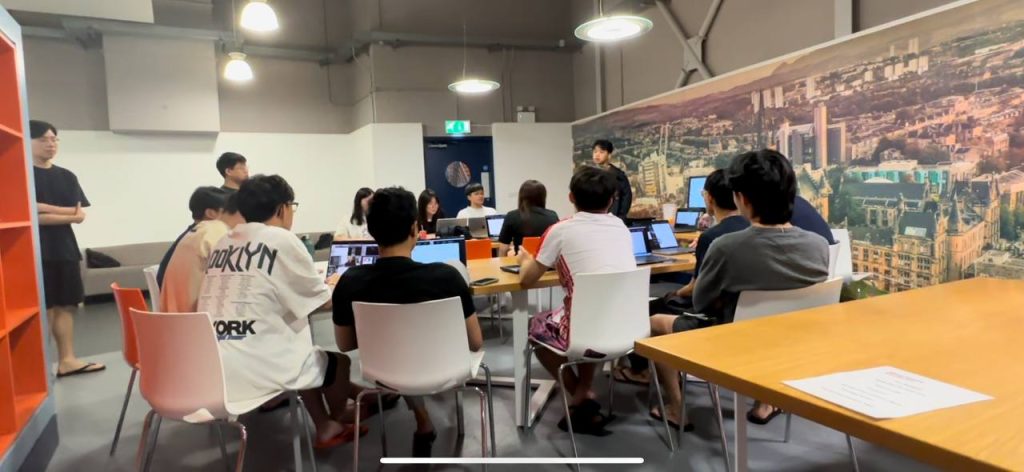
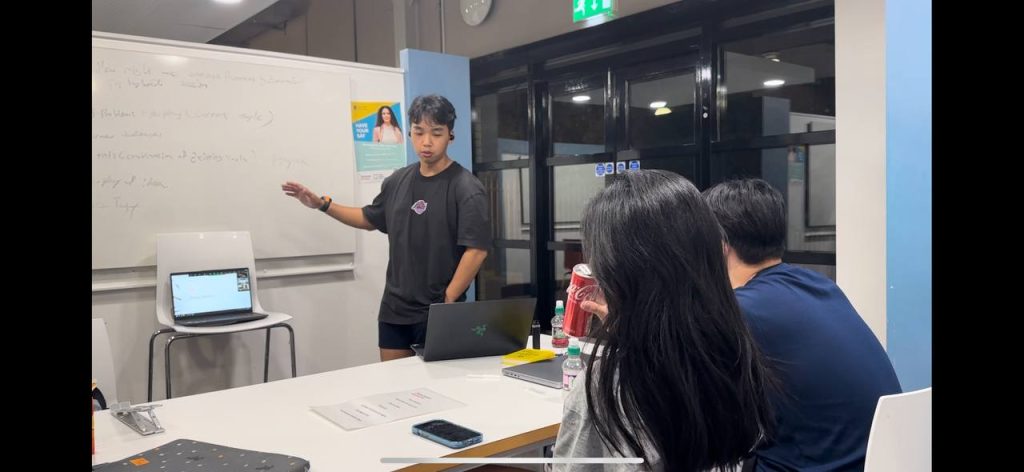
Experimental Setup
| Details | Notes |
| Set up experiment environment |
|
| Introduction |
|
| Lesson |
|
| Activities |
|
| Participants |
|
Presenters Point-Of-View (POV)
Pain Points:
- Difficulty in gauging the engagement level and understanding of online participants, especially during a Q&A session.
- Challenges in managing and facilitating both physical and online participants simultaneously.
- Technical issues with Zoom, such as connectivity problems or poor audio quality.
- Might miss some questions asked by online participants in the chat.
- No engagement between the Roomies and Zoomies
Issues:
- Time lag in responses from online participants.
- The non-interactive nature of traditional Zoom sessions.
Flow of the Lesson: The lesson progressed as planned, with some delays due to the above-mentioned issues.
Advantages: Zoom provides a simple interface, easy screen sharing, and straightforward group video calls.
Disadvantages: The lack of interactivity and real-time engagement tools, potential difficulties with internet connection, and limited features for seamless hybrid meetings.
Participants Point-Of-View (POV)
Pain Points:
- The limited ability for online participants to interact with the presenter and other participants.
- Difficulty in conveying understanding or confusion in real-time during the session.
- Technical difficulties may disrupt the learning process for online participants.
- Zero engagement between online and physical participants during the session
Issues:
- The lack of engagement tools for online participants.
- Discrepancies in the experiences of physical and online participants.
- Lack of a platform to effectively facilitate discussion
Flow of the Lesson: The lesson was understandable but lacked interactive engagement for both groups of participants. Some questions were not answered due to the facilitator missing out the question.
Advantages: Zoom is widely accessible and compatible with various devices, making it easy for participants to join the session.
Disadvantages: The lack of engagement tools, potential technical difficulties, and a feeling of detachment from the classroom environment for online participants.
Possible Solutions
In response to the challenges we have identified during our initial studies, we are proposing the integration of several innovative tools, specifically Mentimeter, Padlet, and Flip, to address and mitigate the issues our client is facing with their current hybrid meeting setup. These tools, each with their unique functionalities, are expected to offer solutions that would significantly enhance the experience for both presenters and participants.
Mentimeter: (Hyperlink)
- Enables real-time interaction during hybrid meetings.
- Allows presenters to conduct live polls, quizzes, and Q&A sessions, promoting participant engagement.
- Facilitates anonymous feedback, fostering an inclusive environment.
Padlet: (Hyperlink)
- Provides a shared digital canvas for participants to express thoughts, questions, or ideas.
- Allows presenter to gauge understanding and adjust lessons in real-time.
- Its intuitive design and user-friendly interface make it a valuable addition to any hybrid meeting setting.
Flip: (Hyperlink)
- Allows participants to share insights through short video responses.
- Provides presenters with comprehensive and personalized insights into each participant's understanding.
- Adds a layer of visual engagement beyond text-based interaction.
With these tools, we aim to foster a hybrid meeting environment that boosts participant engagement, simplifies presenter facilitation, and enhances the overall meeting experience. By integrating these tools, we hope to make hybrid meetings more effective, inclusive, and engaging than traditional in-person sessions. We believe that the combination of these tools will offer a comprehensive solution to our client's needs. (Hyperlink to the Tools Analysis page with the relevant tools)
Experimental Setup
Details |
Notes |
Set up experiment environment |
|
Introduction |
|
Lesson |
|
Activities |
|
Participants |
|
Presenters Point-Of-View (POV)
Pain points:
- Challenges in managing and facilitating both physical and online participants simultaneously.
- Technical proficiency of the participants affects the efficiency of use
Issues:
- Time-consuming if required to watch all the videos
- Requires the creation of multiple topics
Flow of lesson:
- The lesson was smooth and the tool brought about fun for the participants
Advantages:
- Compatible across various devices
- Provides opportunity to engage the Zoomies and Roomies
- Allows all participants to participate in activities
- A single tool that both participants can used, do not require separation of tools between the Roomies and Zoomies
- Able to monitor if the Roomies are engaged or participating
- Participants can create video content creatively
- Participants can interact and engage with one another through the tools by commenting
Disadvantages:
- Requires devices with camera functioning
- Requires more time for the activity as participants have to record content and be familiar with the tool
Participants Point-Of-View (POV)
Pain points:
- The need to figure out various features of the tool
Issues:
- Requires internet connectivity
- Physical classroom becomes chaotic as everyone is recording video
Flow of lesson:
- The lesson was smooth as the tool allows participants to explore the features and expand their creativity in performing the tasks.
Advantages:
- Roomies and Zoomies can view each others’ video
- Provides opportunity to interact and engage with one another especially between the Roomies and Zoomies
Disadvantages:
- Must have device with camera functioning
- Must create account to use the tool
- Voices recorded in the video overlaps for Roomies as they are in the same environment
Overall Benefit of the Solution
With Flip introduced into the lesson, it provides a platform for the Zoomies and Roomies to interact and engage them in tasks. Zoomies and Roomies get to know more about one another. It can be used to allow participants to record videos with self-introduction and bond with the group members in the group. Furthermore, Flip can be used for group activities such as role-playing, and group presentations where videos created by group members can be combined. Additionally, to overcome the issue faced, we would introduce text-to-speech and speech-to-text and audio enhancements capabilities to cater for various needs and as a solution to the issue.
Experimental Setup
| Details | Notes |
| Set up experiment environment |
|
| Introduction |
|
| Lesson |
|
| Activities |
|
| Participants |
|
Presenters Point-Of-View (POV)
Pain points:
- Challenges in managing and gauging engagement levels of both parties of participants
- Technical proficiency of the participants affects the efficiency of use
Issues:
- Time-consuming if required to watch all the videos
- Requires the creation of multiple topics
Flow of lesson:
- The lesson was smooth, and the tool helped to facilitate a competitive spirit for the activities
Advantages:
- Mentimeter facilitated real-time engagement during the lesson, enabling both physical and online participants to take part in the quiz.
- The tool allowed a seamless integration into the existing lesson, making it easier for the presenter to manage and conduct the activity.
- The competitive element introduced by Mentimeter increased participant enthusiasm and involvement.
- The presenter could easily track responses and adjust the lesson flow accordingly.
Challenges:
- Ensuring all participants have access to the tool and understand how to use it required some time.
Participants Point-Of-View (POV)
Pain points:
- Challenges in having any interaction with both groups of participants
- Technical proficiency of the participants affects the efficiency of use
Issues:
- Time-consuming if we require to watch all the videos
- Requires the creation of multiple topics
Flow of lesson:
- The lesson was smooth, and the tool helped participants engage with their counterpart groups
Advantages:
- The quiz conducted via Mentimeter provided a fun and interactive way to engage in the lesson.
- It allowed participants, both in-person and remote, to voice their thoughts simultaneously, fostering a sense of inclusivity.
- The tool's user-friendly interface and straightforward instructions made it easy for participants to join in the activity.
Challenges:
- Internet connectivity issues slightly affected the participants' experience during the live quiz.
- Participants less familiar with such tools took more time to get accustomed to them, causing minor delays.
Overall Benefit of the Solution
With Mentimeter introduced, it has helped bring about a noticeable improvement in participant engagement and interaction. The tools ability to involve both physical and online participants equally in real-time activities fostered a more inclusive and dynamic environment. The quiz feature, in particular, tapped into the competitive spirit of the participants, making the learning process more enjoyable and memorable.
Experimental Setup
Details |
Notes |
Set up experiment environment |
|
Introduction |
|
Lesson |
|
Activities |
|
Participants |
|
Presenters Point-Of-View (POV)
Pain points:
- Hard for Presenter to manage questions by both Roomies and Zoomies
- Roomies asking many questions can cause disruption to the flow of the session
Issues:
- Might distract the participants from focusing on the content of the lesson while they try to utilize Padlet to ask questions.
Flow of lesson:
- The lesson was smooth, and the tool helped in facilitating the discussion of questions
Advantages:
- Easy to Monitor: Padlet's layout made it convenient to monitor responses in real time.
- Engages Participants: Padlet's visual interface helped to engage participants better than traditional methods.
- Versatile Usage: Padlet facilitated multi-format content (text, images, links), which added richness to the discussion.
- Encourages Participation: The anonymous feature encouraged participation, even from typically quiet attendees.
Challenges:
- Connectivity Issues: Some participants encountered difficulties when trying to connect to the Padlet board.
- Learning Curve: The facilitator had to spend time explaining how to use Padlet, which took time away from the lesson.
Participants Point-Of-View (POV)
Pain points:
- Participants have a hard time finding the right moment to ask questions without disrupting the flow
- Participants feel that their questions are not really fully answered, and cant follow up
Issues:
- Might be disruptive in the learning process
Flow of lesson:
- The lesson was smooth, and the tool helped in facilitating the discussion of questions
Advantages:
- Interactive Experience: The use of Padlet made the session more interactive and engaging compared to standard Zoom sessions.
- Enhanced Collaboration: The tool allowed for collaboration in real-time, creating a sense of team cohesion.
- Easy Content Sharing: Participants could share content easily, encouraging active participation.
Challenges:
- Technical Difficulties: Some participants faced technical difficulties, which interrupted the learning process.
- Learning New Tool: Some participants faced a learning curve in understanding how to navigate Padlet.
Overall Benefit of the Solution
Overall, Padlet has facilitated a more engaging and interactive lesson. Its ability to handle multiple content formats (e.g., text, images, links) made the discussion richer and more dynamic, which can potentially enhance understanding of the topic. Further, the interactive nature of Padlet encouraged active participation, thereby potentially improving knowledge retention.
The Golden Combination
Details |
Notes |
Set up experiment environment |
|
Introduction |
|
Lesson |
|
Activities |
Group activity
|
Participants |
|
Flow of lesson:
- The session started with an icebreaker, where participants used Flip to record themselves introducing their names and sharing their previous hybrid class experiences. After introductions, the participants were randomly paired together, incorporating both remote and physical attendees.
- A 5-minute lesson was then conducted, with Padlet being used to host questions and topics for discussion from all participants. The group activity, which utilized Mentimeter for a team-based competition, promoted engagement and communication among both groups of participants.
- To further promote interaction and understanding of the subject matter, a role-playing activity was conducted where participants recorded themselves acting out a certain Sustainable Development Goal (SDG) using Flip. Teammates then had to guess the SDG based on the video.
Advantages:
- The integrated solution greatly boosted interaction and engagement among participants, regardless of their location.
- The use of Padlet for topic discussion encouraged participant contribution and made the discussion more organized.
- The use of Mentimeter made the session more dynamic and interactive.
- The role-playing activity using Flip allowed for creativity and deeper understanding of the SDGs.
Disadvantages:
- The facilitator would need to manage multiple platforms simultaneously, which could be challenging.
- Additionally, participants’ unfamiliarity with the tools might initially hinder smooth participation.
Flow of lesson:
- Participants experienced a well-structured, engaging hybrid lesson.
- After personal introductions using Flip, they were randomly paired for the session promoting interaction.
- Padlet was used to display and discuss various topics and questions which allowed for the uninterrupted flow of the lesson.
- Minimeter was used for reinforced learning of the lesson objectives. The team based aspect allowed for Interaction between Roomies and Zoomies to discuss their answers before submitting them, fostering a spirit of competition and camaraderie among participants
- The Roleplaying using Flip allowed for engagement between participants, promoting a more cohesive environment with fun and creating elements to the learning process.
Advantages:
- The integrated solution made the session engaging, interactive, and fun, thus increasing participation.
- The use of tools such as Flip, Padlet, and Mentimeter added variety to the session and made it more dynamic.
Disadvantages:
- Participants unfamiliarity with the tools might initially hinder smooth participation.
Overall, the use of multiple tools such as Flip, Padlet, and Mentimeter significantly improved the engagement and interaction levels during the session. While there were a few minor hiccups due to unfamiliarity with the tools, with more usage, participants and presenters would get more comfortable, thus making the learning process smoother. Future implementations could involve exploring more features of these tools, and perhaps integrating even more tools to further enhance the hybrid learning experience.
- Tool Expansion: The existing tools such as Flip, Padlet, and Mentimeter can be further exploited to enhance hybrid learning. For instance, Mentimeter’s functionalities for word clouds, open-ended questions, and quick polls can diversify interactivity, and Flip can host student reflections, homework, or project presentations.
- Tool Integration: Other tools, such as Nearpod for VR field trips or 3D models, and Vevox for real-time polling and Q&A sessions, can be incorporated to provide a more comprehensive hybrid learning experience, augmenting engagement and interaction levels.
- Familiarity Improvement: Regular tool usage in lessons can enhance participants’ proficiency, thereby reducing initial hitches and fostering a smoother learning process. The incorporation of these tools in mini activities or assignments can help in achieving this.
- Training Sessions: To fast-track tool familiarity, training sessions or tutorials explaining tool functionalities and resolving technical issues can be introduced.
- Enhanced Monitoring: The real-time monitoring capabilities of tools like Padlet and Mentimeter can be leveraged to collect feedback and assess understanding during lessons, facilitating immediate adjustments in lesson delivery.
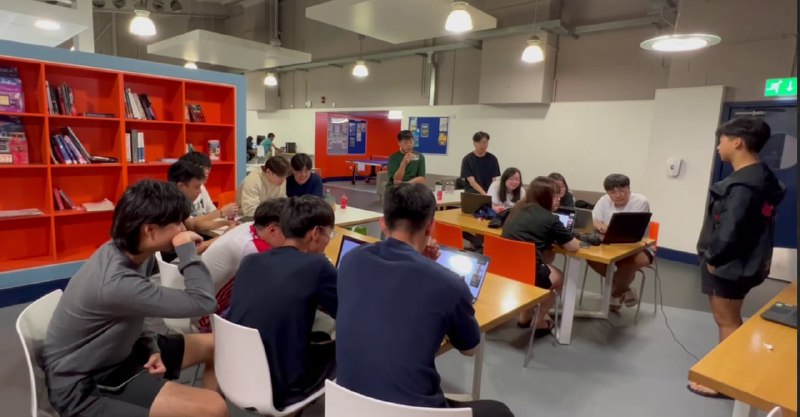
Past Ideas Exploration: Journey Through Technological Terrain
As we embarked on our mission to revolutionize the hybrid learning experience, our minds became fertile ground for innovative, technology-driven ideas. From the Internet of Things (IoT) to Augmented and Virtual Reality (AR/VR), and finally to 2D Virtual Environments, we explored several cutting-edge solutions, each with its unique allure and challenges.
The IoT Expedition: Buttons and Gestures
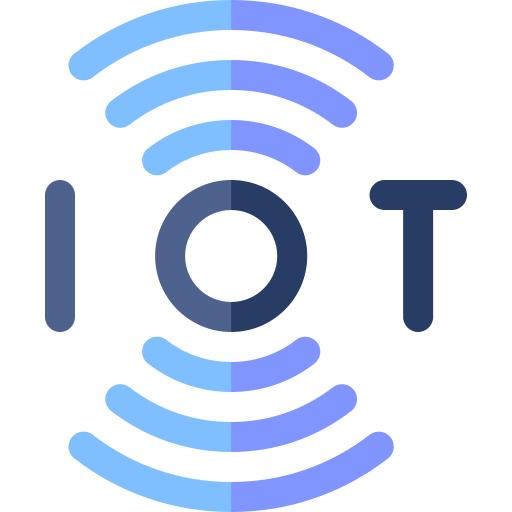
The Turning Point: Familiarity and Accessibility

The VR/AR Adventure
